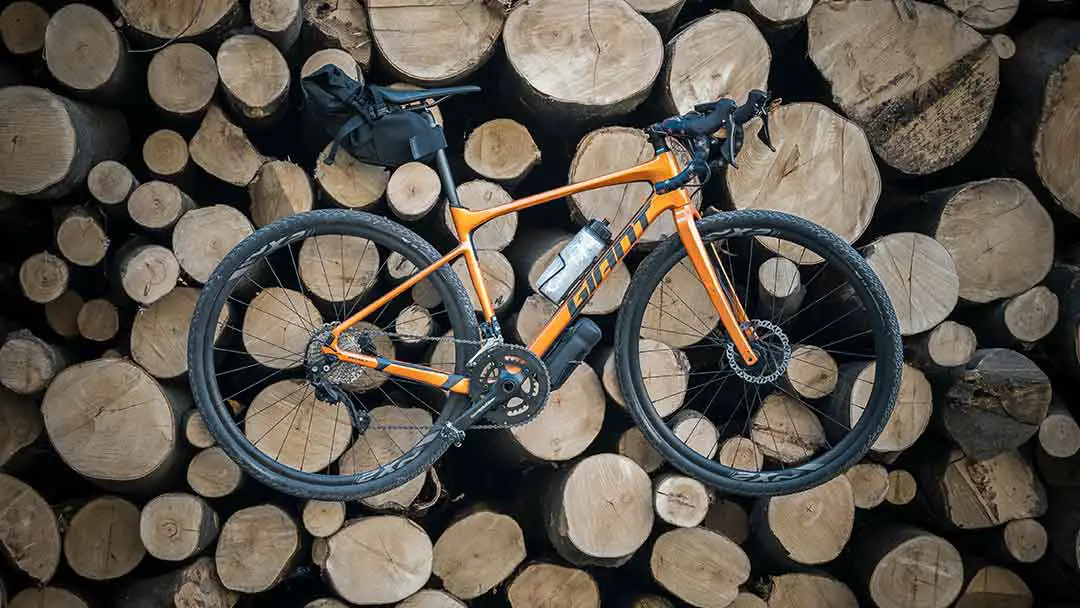Touring Bike Vs. Gravel Bike | What’s the difference?

As an Amazon Associate we earn from qualifying purchases made on our website. If you make a purchase through links from this website, we may get a small share of the sale from Amazon and other similar affiliate programs. You can read our complete legal information for more details. By using this site, you agree the information contained here is for informational purposes only. For specific medical questions, consult your doctor. NO information on this site should be used to diagnose, treat, prevent or cure any disease or condition.
When the sun is shining, and the weather is sweet, there are a few better ways to enjoy the great outdoors than peddling out into nature’s vast expanses on your favorite bike.
Different people living across the globe in every terrain imaginable would agree, but where they may differ is the kind of bike they peddle out on.
Today we will look at two greats, the Touring Bike, and the Gravel Bike. So, what are their differences?
The Basics
Let’s start with the touring bike. Robust and sturdy in their design, touring bikes are built for comfort and the capability to carry all the supplies a multiple-day adventure would require.
Featuring an upright seating position that invites you to look around and enjoy the scenery, the touring bike is versatile in its equal usefulness to multi-day traveling, as well as city commuting, and even shopping.
Meanwhile, The Gravel bike is a mean Multi-terrain machine geared towards speed on and off-road and versatility across multiple terrains.
Larger tires aid in venturing off the beaten path into rougher terrain, paired with a drop handlebar increasing your aerodynamics against the wind, hills, and long stretches of pavement. The Gravel bike is ideal for day trips and general adventuring in any terrain.

Touring Bike Breakdown
This is the bike of the traveler and camper. The person who wants to load up and take off, riding back roads, national parks, and campgrounds.
It’s sturdy, robust, comfortable, and prepared to ride for as long a trip as you are willing to take.
Touring bike storage capabilities
The touring bike’s name is derived from its ability to hold everything you need for a multi-day bike tour. This could include everything from tents and sleeping bags to your cooking supplies and extra clothes.
The touring bike is designed to include various racks, most commonly the rear rack or high front racks, but it is also built to seamlessly handle the addition of extra panniers or saddle bags.
They can be added in places such as next to the front wheel hub, by the rear wheel, and atop the front wheel.
These features make the touring bike perfect for anyone who lives by the phrase, “it is better to have it and not need it than to need it and not have it.” Handling everything you need and keeping even handling in the process.
Have your tried bikepacking yet? Not sure what it is? We drop some helpful info in this article: Bikepacking VS Touring Compared | What’s The Difference?

Gravel Bike Breakdown
This is the bike of the explorer. The person who goes out on a Saturday morning and sets off down your local backroads to see what adventures the day may bring.
Maybe you will find contentment effortlessly gliding the country roads, stumbling onto some winding downhill trails you can race your friends down.
Or maybe you will come across a creek and decide to pedal back alongside it and discover what may lie across the next forest hill.
Touring bike frame
So, the touring bike can haul some gear, but can’t you add panniers to most bikes? What makes it any different than other bikes? To answer this question, we will look at the frame.
The touring bike is made of more durable materials than the average speed bike, usually steel. Prioritizing comfort and stability instead of keeping it as light as possible for increased speed, the Touring bike’s steel frame is less likely to bend, break, or wobble under pressure.
This makes a sturdy frame capable of handling extra weight with plenty of pannier mounting points to prove it.
Gravel bike frame
The gravel bike, on the other hand, is designed for versatility among various terrains and has a lighter frame composed commonly of aluminum or carbon, which are lighter than the usual steel frame of the touring bike, reducing some weight for increased speed and absorption of vibrations as you take it off-road into your next adventure, no matter the terrain.
The Gravel bike can also tote panniers but tends to be geared more towards day outings and adventuring in the great outdoors instead of handling a whole camping trip’s worth of gear.
It also commonly includes several mounts for additional storage and the very appreciated water bottle cages on the frame.
Riding Positions and What To Consider
Most touring bikes include a drop handlebar paired with a more upright seating position.
The drop handlebar can be beneficial on the more extended tours this bike is designed for because, as opposed to flat bar bikes, drop handles allow for a more aerodynamic ride and less overall expended energy, which throughout a several-day ride, will be undoubtedly beneficial addition.
Touring bike handlebars are also wider, providing more comfort and leverage for longer treks.
Gravel bikes also come with a drop handlebar and have a seating position leaning more towards prioritization of aerodynamics and speed to facilitate more aggressive riding positions.
Gravel bike handlebars tend to be narrower and afford you a more precise grip for navigation of bumpy terrain.

Tires & Gears
Touring bikes have smaller tires than their gravel treading counterparts, commonly being between 25mm and 40mm. However, the touring bike does have a wide range of gears (18-120) which facilitate climbing and descending steep grades with grace.
Gravel Bikes are known for having wider tires, typically between 38 and 42mm in width. This is designed to provide more grip and traction across almost any terrain you may come across during your ride.
The gear range on the gravel bike may be more from 20-100. Though, its lighter overall weight allows it to tread where a touring bike might find trouble.
Twisted Terrain Suggestions
Touring bikes, as we now know, are designed for long, comfortable rides across generally paved or flat grassy and dirt roads.
Though for the rebels out there, to answer this question upfront, yes, you can take a touring bike off-road and live to tell the tale, though if you plan on doing a lot of off-roading, you may want to look into the gravel bike.
They are designed to do great across both fronts and can handle terrains from, of course, gravel roads, to steep rocky inclines, to rainy trails, grassy hills, and more.
If you see a hilltop that looks cool through a few miles of wooded area and want a bike to take you there, the gravel bike is the choice, but if you want to get through a mostly paved, camp-long trips through a national forest over the weekend, the touring bike may be for you.
Best uses for a touring bike:
- A weekend ride to your favorite national park to explore and go camping.
- A bike to explore the back roads of your city in comfort while you check out the scenery.
- A reliable ride to work
- A good bike with plenty of storage for a shopping trip
- A long-term biking trip
- Bikepacking and camping at your destinations
Best uses for a gravel bike:
- Exploring Bike trails that include various terrains
- A Fast ride to work
- A good bike for exploring off-road
- Racing against your friends on or off-road.
- A good bike for someone who is into off-road exploration in lots of different areas
Do touring bikes come with suspension?
Many of the especially more high-end touring bikes actually do not have suspension. At first, it may sound strange that an expensive touring bike would lack this feature, but there is a reason behind this.
Firstly, the suspension would put limitations on the number of front racks a touring bike is able to maintain.
Secondly, the mechanisms of suspensions could be a more complex fix than many novice cyclists would be able to handle upon finding themselves broken down on a more remote leg of their tour.
And lastly, with the touring bike largely being built for smooth cruising over long hauls, the need for suspension weighed against the possible loss of front rack space and the possibility of turning your exciting weekend adventure into being stranded in the middle of nowhere, made losing the suspension a sensible choice.
On a bike that prioritizes comfort, this is accounted for between the sturdiness of the steel frame and the wideness of the tires to absorb the shock of any cracks, stones, and potholes you come across.

Do gravel bikes come with suspension?
Many gravel bikes are also without suspension. But it is for different reasons than its touring relative.
In a bike that prioritizes being fast and versatile on all fronts, the suspension is just added weight. But keeping light for enhanced speed is not the only reason most gravel bikes decided against the suspension.
For this example, we will need to look towards a bike where suspension is more commonplace, the mountain bike.
The mountain bike gets its name from the mountainous terrain it is built to withstand. Unlike the mountain bike, the gravel bike is also designed to be fast on pavement.
The shocks in the suspension are built to handle the ups and downs of dropping off rocks and uneven terrain, but when you ride on pavement, the suspension is still at work, causing a slight bounce factor in your ride.
These types of movement within your bike absorb your extra energy as well, meaning there is a fair amount of wasted energy involved with moving your bike forward on level ground.
This effect also can cause slower acceleration, causing the loss of valuable seconds in areas such as racing. For these reasons, many gravel bike manufacturers vetoed suspension as well.
Weight Issues
The touring bike takes the first place prize for being the heavier bike of the two. Coming in at a usual 28-33 pounds, the touring bike is sturdy and outfitted with everything you need for days on the road.
On the other hand, the Gravel bike is lighter, coming in at a usual 19-24 pounds. So if you are looking for a lightweight bike that could fit in the back of your SUV, the gravel bike may be for you, but if you are looking for a pack mule of a bike for a bike-transported camping trip, you may lean towards a touring bike.
Geometry
The touring bike is known for its longer wheelbase, as well as slack frame angles and three chainrings.
While the gravel bike has longer chain stays, slacker seats, and headtubes with lower bottom brackets for better stability.
Touring Bike Prices
As with most things, there is a high and low end of every market, and as we know, the biking section can get pretty pricey; that is not to say you cannot find a good deal, especially on used bikes.
With that being said, for a brand-new entry-level touring bike, you can look to spend about $700 – $1,200. Some of these bikes may cut their price by making the bike of aluminum or only containing a few basic pannier racks, but they will have everything you need to hit the road.
And on the higher end of the spectrum of nearly $13,000, you can expect all the bells and whistles, carbon frames, and racks for days.
Gravel bike Prices
The general pricing I have seen for gravel bikes is somewhat similar to that of the touring bike.
For a sturdy and lasting brand-new gravel bike, a budget of $1000 is a good starting point; you should be able to get a gravel bike that will last you a lifetime and have everything you need for no more than $2000, of course, there are exceptions to this rule, some coming in in the upper hundreds and others just short of $10,000
Pricing Overview
The good news is that after looking into as many prices for as many bikes as I could find, I realized that there are Touring and Gravel bikes available in many different price brackets and that if you can save up a little over $500-$800 you should be able to walk away with a decent bike on either side of the scale.

Final Thoughts
No matter where you are from in the world and which bike you choose for whatever terrain that marks your local stomping grounds, be it the Touring bike or The gravel bike, have fun, and enjoy peddling out into the great outdoors!
We hope you found this article helpful, and we also hope it saved you some time by helping you figure out what you need.
Helpful Links:



